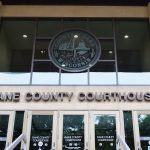New Smelt Consumption Advisory for Lake Superior
Elevated Levels of PFAS Found in Rainbow Smelt
MADISON, Wis. – Based on recent sampling results, the Wisconsin Department of Natural Resources (DNR) and the Department of Health Services (DHS) are recommending a PFAS-based fish consumption advisory for Lake Superior.
Due to the high levels of PFOS found in the samples, the DNR and DHS are updating the recommended rainbow smelt consumption advisory from an unrestricted amount to one meal per month for Lake Superior.
These legacy contaminants have made their way into the environment in a variety of ways, including spills of PFAS-containing materials, discharges of PFAS-containing wastewater to treatment plants and certain types of firefighting foams.
These legacy contaminants have made their way into the environment in a variety of ways, including spills of PFAS-containing materials, discharges of PFAS-containing wastewater to treatment plants and certain types of firefighting foams.
The risk of health problems increases with the amount of contaminated fish you eat. Following this advisory will help protect you from excess PFAS exposure found in fish. The advisory could change in the future as the DNR and DHS continue to learn more about the health risks from eating fish caught from this area and more fish data become available.
As part of the DNR’s statewide PFAS monitoring efforts to monitor fish tissue and water chemistry at select sites around the state, smelt were collected from two locations in Lake Superior in 2019 approximately 30 miles apart at sites near the Apostle Islands and off Port Wing. PFAS was detected in samples from both locations.
Rainbow smelt are a small, silver fish that are non-native to Lake Superior. Some anglers will catch smelt through the ice, but the majority of smelt harvest occurs in the springtime as the fish migrate into nearshore areas to spawn.
“The smelt migration run starts as spring arrives and winter ice cover dissipates which creates a popular local tradition of harvesting smelt for fish fries,” said Brad Ray, Lake Superior Fisheries Unit Supervisor. “It’s important for consumers to understand the potential risks associated with this new advisory.”
Fish Tissue Results
In mid-December, the DNR received results from the contaminant samples taken from Lake Superior. Rainbow smelt, a popular sport fish and prey species for many predator fish and various bird species, had a high level of PFOS (perfluorooctane sulfonate), one of the many types of PFAS contaminants.
“Eating fish that have high levels of PFAS may increase your risk for certain health effects,” said Dr. Jonathan Meiman, Chief Medical Officer and State Epidemiologist for Occupational and Environmental Health at the Wisconsin Department of Health Services. “Limiting your exposure by choosing fish that are low in PFAS is the best way to reduce your risk while still maintaining the health benefits of fish consumption.”
The DNR also received sample results from bloater chub, cisco/lake herring, lake whitefish, lake trout, and siscowet lake trout in Lake Superior and crappie, yellow perch, channel catfish, carp, northern pike, walleye, and musky from the St. Louis River. The PFOS levels found in those fish do not warrant a consumption advisory change at this time.
Currently, the DNR and DHS are unaware of any other PFAS-based consumption advisories for other fish species in the Great Lakes.
For consumption advice for other Great Lakes fish species based on toxic substances, such as PCBs (polychlorinated biphenyls) or mercury, please refer to the statewide safe-eating guidelines. Additional consumption advice can be found on the DNR’s fish consumption webpage.
To learn more about PFAS and fish, visit the DNR’s PFAS webpage. For more information on PFAS and associated human health effects, visit the DHS’s PFAS webpage.
NOTE: This press release was submitted to Urban Milwaukee and was not written by an Urban Milwaukee writer. While it is believed to be reliable, Urban Milwaukee does not guarantee its accuracy or completeness.
More about the PFAS Problem
- Environmental Advocates Hail Wisconsin Supreme Court Decision in Evers v Marklein - Midwest Environmental Advocates - Jul 8th, 2025
- Wisconsin Supreme Court Backs State Regulators of PFAS Pollution - Danielle Kaeding and Rich Kremer - Jun 24th, 2025
- Gov. Evers Releases Statement on Wisconsin Supreme Court Decision in WMC Inc v. DNR - Gov. Tony Evers - Jun 24th, 2025
- Rep. Shelia Stubbs Elected Great Lakes-St. Lawrence Legislative Caucus Vice Chair of the Task Force on Emerging Contaminants - State Rep. Shelia Stubbs - Jun 16th, 2025
- Legislature’s Budget Committee Unanimously Boosts Clean Water Funding By $732 Million - Danielle Kaeding - Jun 6th, 2025
- Trump Administration moves to weaken standards for toxic ‘forever chemicals’ in drinking water - Clean Wisconsin - May 14th, 2025
- Wisconsin Officials Unhappy With EPA Plan To Weaken PFAS Standards - Danielle Kaeding - May 14th, 2025
- Wisconsin Could Lose $55 Million Under Proposed EPA Budget Cuts - Danielle Kaeding - May 7th, 2025
- French Island Makes Progress on PFAS Pollution - Richelle Wilson and Trevor Hook - Mar 24th, 2025
- Who Will Pay for PFAS Pollution? - Bennet Goldstein - Feb 27th, 2025
Read more about PFAS Problem here






















